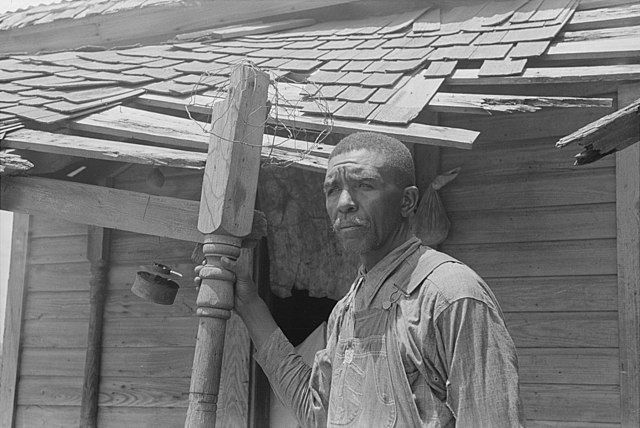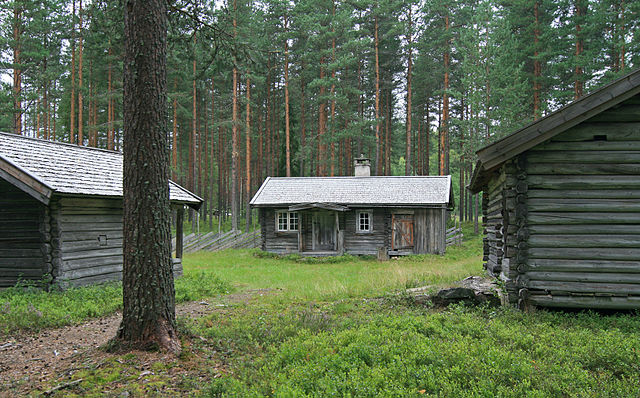Sharecropping is a legal arrangement in which a landowner allows a tenant (sharecropper) to use the land in return for a share of the crops produced on that land. Sharecropping is not to be confused with tenant farming, providing the tenant a higher economic and social status.
A Farm Security Administration photo of a cropper family chopping the weeds from cotton near White Plains, in Georgia, US (1941)
Sharecroppers on the roadside after they were evicted for membership in the Southern Tenant Farmers Union (January 1936)
An early 20th century Texas sharecropper's home diorama at the Audie Murphy American Cotton Museum, in Greenville, Texas 2015
Cotton sharecroppers, Hale County, Alabama, 1936
A tenant farmer is a person who resides on land owned by a landlord. Tenant farming is an agricultural production system in which landowners contribute their land and often a measure of operating capital and management, while tenant farmers contribute their labor along with at times varying amounts of capital and management. Depending on the contract, tenants can make payments to the owner either of a fixed portion of the product, in cash or in a combination. The rights the tenant has over the land, the form, and measures of payment vary across systems. In some systems, the tenant could be evicted at whim ; in others, the landowner and tenant sign a contract for a fixed number of years. In most developed countries today, at least some restrictions are placed on the rights of landlords to evict tenants under normal circumstances.
Tenant farmer on his front porch, south of Muskogee, Oklahoma (1939)
A typical Husmann residence from Hof






